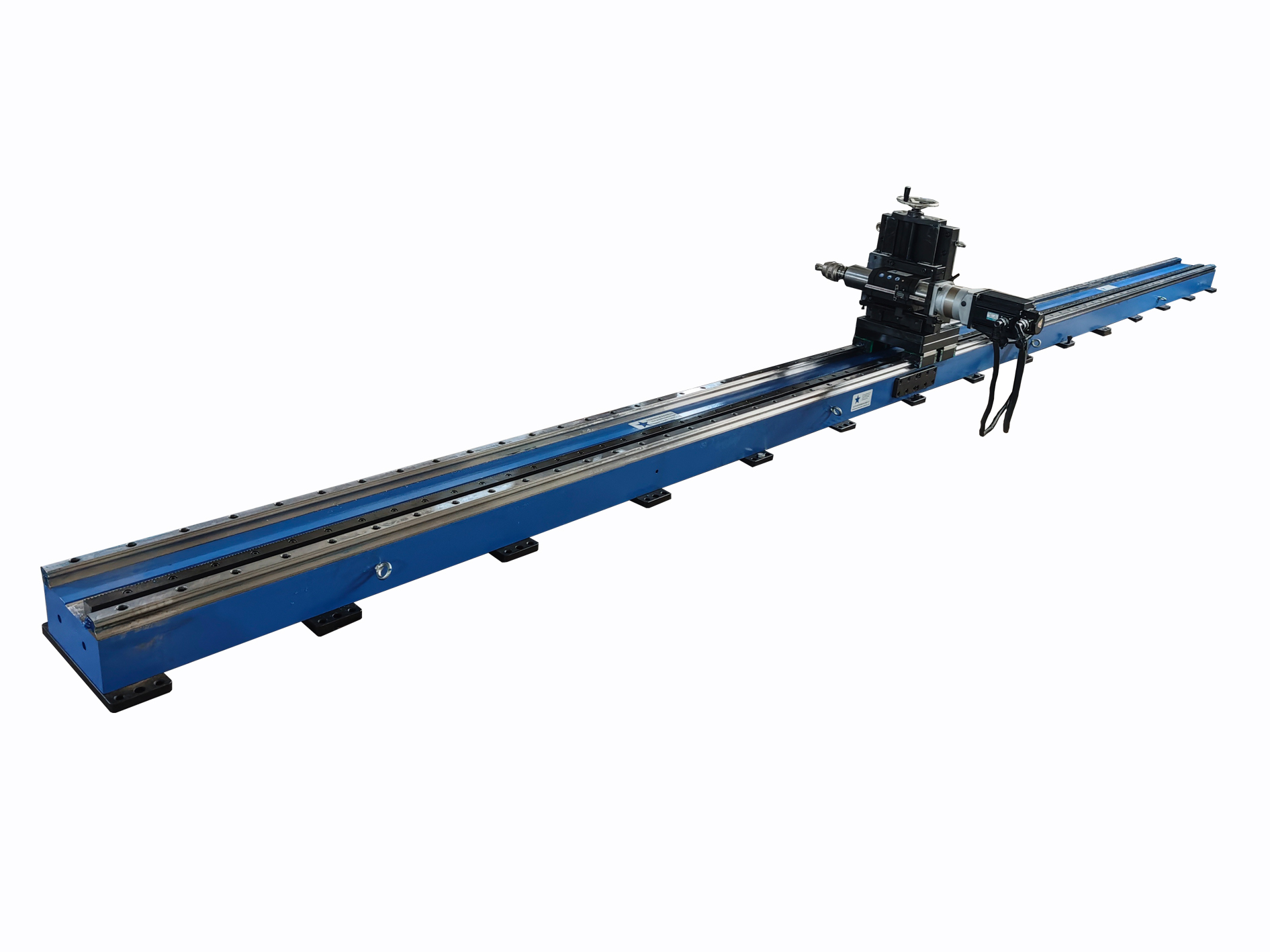What is a portable milling machine?
A portable milling machine is a lightweight, mobile metal processing equipment used to mill workpieces on site. It is usually used to process large or fixed workpieces, such as the surface, holes or slots of ships, bridges, pipelines or heavy machinery parts. Compared with traditional fixed milling machines, portable milling machines are compact in design, easy to transport and install, and suitable for use in non-workshop environments.
Why they exist?
The existence of portable milling machines is to solve the following problems:
The problem of processing large workpieces: Many workpieces cannot be transported to the processing workshop due to their large size or weight. Portable milling machines can be processed directly on site.
On-site maintenance needs: In industrial maintenance, equipment parts may need to be repaired on site (such as flattening the surface or processing mounting holes). Portable milling machines provide flexible solutions.
Reduce costs: Avoid transporting large workpieces to the processing plant, saving time and logistics costs.
Adapt to complex environments: In narrow or special working environments (such as offshore platforms and construction sites), portable milling machines can adapt to scenarios where traditional milling machines cannot operate.
How to operate a portable milling machine
Operating a portable milling machine usually includes the following steps:
Preparation:
Inspect the equipment: Make sure the milling machine, tool and power supply (or pneumatic/hydraulic system) are intact.
Choose the tool: Choose the appropriate milling tool according to the processing material and requirements.
Fix the workpiece: Make sure the workpiece is stable, and use a clamp or magnetic base to fix the milling machine if necessary.
Installation and calibration:
Mount the milling machine on the workpiece and adjust the position to ensure that the tool is perpendicular or aligned with the processing surface.
Use a level or laser calibration tool to ensure processing accuracy.
Set parameters:
Set the tool speed and feed rate according to the material and processing type (such as rough milling or fine milling).
Adjust the cutting depth, usually starting with a small depth and gradually increasing.
Processing operation:
Start the milling machine and advance the tool slowly to ensure smooth cutting.
Monitor the processing process, clean the chips regularly, and check the tool wear.
Finishing:
After processing, turn off the equipment and clean the work area.
Check the surface quality of the processing and perform measurements or subsequent processing if necessary.
Note: Operators must be trained, familiar with the equipment manual, and wear protective equipment (such as goggles, earplugs).
Advantages and Disadvantages of Portable Milling Machines
Advantages
Portability: light weight, small size, easy to transport and install, suitable for on-site operations.
Flexibility: can process large or fixed workpieces, adapt to a variety of environments and angles.
Cost-effectiveness: reduce workpiece transportation and disassembly costs, shorten downtime.
Versatility: can be used for milling planes, slots, holes, etc., and some models support drilling or boring.
Rapid deployment: short installation and commissioning time, suitable for emergency repairs.
Disadvantages
Limited processing accuracy: compared with fixed CNC milling machines, portable milling machines have lower accuracy and are suitable for rough processing or medium precision requirements.
Insufficient power and rigidity: limited by volume, the cutting capacity and stability are not as good as large milling machines, and it is difficult to handle extremely hard materials or deep cutting.
Operation complexity: on-site calibration and fixation require experience, and improper operation may affect the processing quality.
High maintenance requirements: On-site environment (such as dust and humidity) may accelerate equipment wear and require regular maintenance.
Tool restrictions: Limited by the size of the equipment, the types and sizes of available tools are limited.
Precautions
Safety first:
Check the fixation of the equipment and workpiece before operation to avoid looseness and accidents.
Wear protective equipment to prevent chips from splashing or noise damage.
Comply with the safety specifications of the power supply or pneumatic system to avoid leakage or excessive pressure.
Environmental adaptation:
Ensure that the working area is well ventilated and flammable materials are cleaned.
When operating in a humid or high temperature environment, pay attention to the waterproofing and heat dissipation of the equipment.
Processing parameters:
Select appropriate tools and cutting parameters according to the material of the workpiece to avoid overheating of the tool or damage to the workpiece.
Avoid cutting too deep at one time, and process in multiple times to protect the equipment and tools.
Equipment maintenance:
Clean chips and lubricating oil after use to prevent corrosion.
Regularly check the tool, guide rail and drive components, and replace worn parts in time.
Training and experience:
Operators need to be familiar with the equipment performance and processing technology. Untrained operators are prohibited from operating.
Before complex processing tasks, it is recommended to conduct a small-scale trial cut.
Summary
The portable milling machine is a practical device designed for on-site processing needs, which makes up for the lack of mobility and flexibility of traditional milling machines. It is widely used in industrial maintenance, shipbuilding, energy equipment maintenance and other fields. However, its accuracy and power are limited, and it is suitable for tasks with medium precision requirements. When operating, you need to pay attention to safety, parameter setting and equipment maintenance to ensure processing results and equipment life. If you need more specific technical selection or operation guidance, you can refer to the equipment manual or consult a professional supplier.









